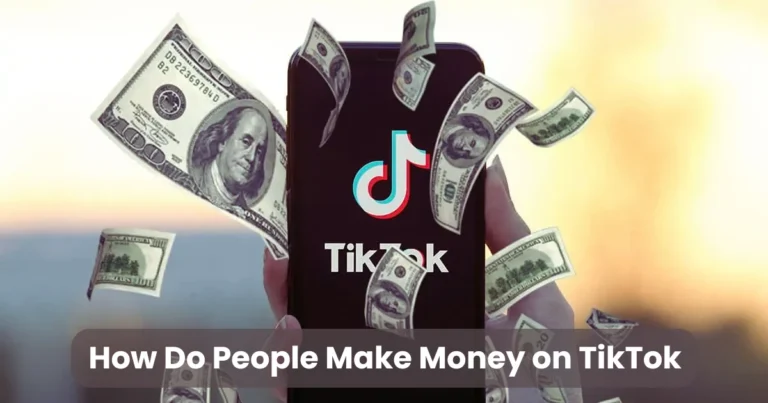AI Prompt Storytelling: Craft Stories with AI in 2025

Contents
- 1 What is AI Prompt Storytelling?
- 2 Why Use AI for Storytelling?
- 3 How to Get Started with AI Prompt Storytelling
- 4 Best Practices for AI Prompt Storytelling
- 5 Tools and Platforms for AI Prompt Storytelling
- 6 Real-World Applications of AI Prompt Storytelling
- 7 Challenges and Limitations
- 8 Tips to Maximize Time in AI Prompt Storytelling
- 9 Future of AI Prompt Storytelling
AI prompt storytelling has revolutionized how writers, creators, and businesses craft compelling narratives in 2025. By leveraging artificial intelligence, anyone can generate unique stories, enhance creativity, and streamline the storytelling process. Whether you’re a novelist, content creator, or marketer, AI tools offer endless possibilities to spark inspiration and produce high-quality narratives. This article explores the art of AI prompt storytelling, offering actionable techniques, tools, and tips to maximize your storytelling potential. From understanding AI’s role to mastering prompt engineering, we’ll guide you through creating engaging stories with ease.
What is AI Prompt Storytelling?
AI prompt storytelling involves using artificial intelligence tools to generate, refine, or enhance narratives based on user-provided prompts. These prompts act as instructions, guiding AI models to produce creative content tailored to specific themes, genres, or styles. By inputting a well-crafted prompt, users can create anything from short stories to intricate novels, all while saving time and boosting creativity.
Moreover, AI storytelling isn’t just for professional writers. Bloggers, educators, game developers, and marketers use it to craft engaging content quickly. For instance, AI can generate plot ideas, character backstories, or even dialogue, making it a versatile tool for creators across industries. Transitioning to AI-driven storytelling requires understanding how to communicate effectively with these systems, which we’ll explore next.
Why Use AI for Storytelling?
AI prompt storytelling offers several advantages, making it a game-changer for creators. Here’s why you should consider it:

1. Boosts Creativity
AI tools provide fresh ideas when writer’s block strikes. By generating unique plot twists, character arcs, or settings, AI sparks inspiration, helping you overcome creative hurdles. For example, tools like Grok can suggest unexpected story directions, keeping your narratives dynamic.
2. Saves Time
Crafting a story from scratch takes hours, but AI can produce drafts in minutes. This efficiency allows creators to focus on refining ideas rather than starting from zero. Consequently, you maximize time spent on polishing your work.
3. Customizable Outputs
AI tools adapt to your needs, producing content in specific genres, tones, or lengths. Whether you need a fantasy epic or a concise blog post, AI prompt storytelling delivers tailored results. This flexibility ensures your stories align with your vision.
4. Accessible to All Skill Levels
You don’t need to be a seasoned writer to use AI. Beginners can input simple prompts, while advanced users can craft detailed instructions for complex narratives. As a result, AI democratizes storytelling, making it accessible to everyone.
Transitioning to practical applications, let’s dive into how you can start using AI prompt storytelling effectively.
How to Get Started with AI Prompt Storytelling
To maximize your storytelling potential with AI, follow these steps:

Step 1: Choose the Right AI Tool
Selecting a reliable AI tool is crucial. Popular options in 2025 include:
- Grok: Known for creative text generation and accessible via grok.com or X apps.
- ChatGPT: Offers versatile storytelling capabilities for various genres.
- Sudowrite: Tailored for fiction writers, with features for plot and character development.
Each tool has unique strengths, so choose one that aligns with your goals. For instance, Grok excels at generating imaginative narratives, while Sudowrite focuses on novel-writing support.
Step 2: Craft Effective Prompts
The quality of your AI-generated story depends on your prompt. A well-structured prompt includes:
- Context: Specify the genre, setting, or theme (e.g., “a dystopian sci-fi story set in 2050”).
- Characters: Describe key characters or their traits (e.g., “a brave astronaut with a mysterious past”).
- Plot Direction: Outline the desired storyline or conflict (e.g., “a struggle against an alien invasion”).
- Tone and Style: Indicate the mood or writing style (e.g., “dark and suspenseful” or “humorous and light”).
For example, a prompt like, “Write a 500-word fantasy story about a young mage discovering a hidden kingdom, with a mysterious tone,” provides clear guidance for the AI.
Step 3: Experiment and Refine
Don’t expect perfection on the first try. Experiment with different prompts, adjusting details to improve outcomes. For instance, if the AI’s output is too vague, add more specifics to the prompt. Similarly, if the tone feels off, tweak the language to align with your vision. This iterative process ensures you maximize time and quality.
Step 4: Edit and Enhance
AI-generated stories often need polishing. Use the AI’s draft as a foundation, then refine it to add your unique voice. Check for consistency, grammar, and flow, ensuring the narrative feels authentic. Additionally, you can use AI to suggest edits or expand specific sections, further streamlining the process.
Best Practices for AI Prompt Storytelling
To create compelling stories, follow these best practices:

1. Be Specific in Your Prompts
Vague prompts lead to generic results. Instead of “write a story,” try “write a 300-word horror story about a haunted lighthouse in Maine, narrated by a skeptical journalist.” Specificity guides the AI to produce relevant, engaging content.
2. Use Iterative Prompting
Break complex stories into smaller prompts. For example, first generate a plot outline, then ask for character backstories, and finally request dialogue. This approach builds layered narratives while maintaining control over the creative process.
3. Incorporate Constraints
Constraints like word count, perspective, or timeline help focus the AI’s output. For instance, “Write a 200-word first-person story about a time traveler stuck in the 1800s” ensures concise, targeted results.
4. Leverage AI for Inspiration
If you’re stuck, ask the AI for ideas. Prompts like, “Suggest five plot twists for a sci-fi thriller,” can spark creativity. Then, use these ideas to craft a full story, maximizing your creative output.
5. Combine AI with Human Creativity
AI is a tool, not a replacement for your voice. Use its outputs as a starting point, adding personal touches to make the story yours. This hybrid approach ensures authenticity and emotional depth.
Tools and Platforms for AI Prompt Storytelling
Several platforms excel at AI prompt storytelling in 2025. Here’s a closer look:

- Grok: Created by xAI, Grok is ideal for generating creative narratives. Accessible on grok.com, X, and mobile apps, it offers free usage with quotas and a paid SuperGrok plan for higher limits. Its voice mode (available on iOS/Android apps) adds an interactive storytelling experience.
- Sudowrite: Designed for fiction writers, Sudowrite helps with plot development, character creation, and descriptive writing. It’s perfect for novelists seeking detailed storytelling support.
- Jasper AI: Popular among marketers, Jasper generates engaging blog posts and short stories tailored for SEO.
- NovelAI: Specializes in narrative-driven content, with features for world-building and consistent character development.
To maximize time, test multiple tools to find the one that best suits your needs. For example, combine Grok’s creative flexibility with Sudowrite’s novel-writing features for long-form projects.
Real-World Applications of AI Prompt Storytelling
AI prompt storytelling extends beyond creative writing. Here are some practical applications:

1. Content Creation
Bloggers and marketers use AI to craft engaging articles, social media posts, or ad copy. By inputting prompts with SEO keywords, you can generate content optimized for search engines, as demonstrated in this article.
2. Game Development
Game designers use AI to create immersive narratives, dialogue, or world lore. For instance, a prompt like, “Generate a backstory for a fantasy RPG villain,” can produce rich content for games.
3. Education
Teachers use AI to create interactive storytelling exercises, helping students develop writing skills. Prompts like, “Write a short story based on a historical event,” engage students creatively.
4. Film and Media
Screenwriters leverage AI to brainstorm plot ideas or draft scripts. AI-generated storyboards or dialogue can save time during pre-production.
By exploring these applications, you can see how AI prompt storytelling transforms industries, making it a versatile tool for creators.
Challenges and Limitations
While AI prompt storytelling is powerful, it has limitations:
- Lack of Emotional Depth: AI may struggle to capture nuanced emotions or cultural contexts, requiring human edits.
- Over-Reliance Risk: Depending too heavily on AI can stifle your creativity. Balance AI use with personal input.
- Prompt Dependency: Poorly crafted prompts lead to subpar results. Learning prompt engineering takes practice.
- Ethical Concerns: Ensure AI-generated content is original and doesn’t infringe on copyrighted material.
To address these challenges, always review AI outputs, refine prompts, and add your unique perspective to maintain authenticity.
Tips to Maximize Time in AI Prompt Storytelling
To make the most of AI prompt storytelling and maximize time, consider these tips:
- Batch Prompts: Create multiple prompts at once to generate several story ideas in a single session.
- Use Templates: Develop reusable prompt templates for consistent results (e.g., “Write a [genre] story about [character] in [setting]”).
- Schedule Editing: Dedicate specific times for editing AI drafts to streamline your workflow.
- Combine Tools: Use one AI tool for ideation (e.g., Grok) and another for polishing (e.g., Sudowrite).
- Stay Updated: AI tools evolve rapidly. Follow platforms like X for updates on new features or tools in 2025.
By implementing these strategies, you’ll save time and produce high-quality stories efficiently.
Future of AI Prompt Storytelling

In 2025, AI prompt storytelling continues to evolve. Advancements in natural language processing make AI tools more intuitive, producing human-like narratives with minimal input. Additionally, integration with augmented reality (AR) and virtual reality (VR) is transforming interactive storytelling, allowing users to immerse themselves in AI-generated worlds.
Furthermore, ethical AI development is gaining traction, ensuring tools prioritize originality and cultural sensitivity. As AI becomes more accessible, creators worldwide will leverage it to tell diverse, inclusive stories. To stay ahead, experiment with emerging tools and refine your prompt engineering skills.
Conclusion
AI prompt storytelling is a powerful tool for creators, offering endless possibilities to craft compelling narratives in 2025. By mastering prompt engineering, choosing the right tools, and combining AI with human creativity, you can produce engaging stories efficiently. Whether you’re a writer, marketer, or educator, AI prompt storytelling saves time, boosts creativity, and opens new storytelling avenues. Start experimenting today—craft a prompt, explore AI tools like Grok, and unleash your storytelling potential. The future of narrative creation is here, and it’s yours to shape.





